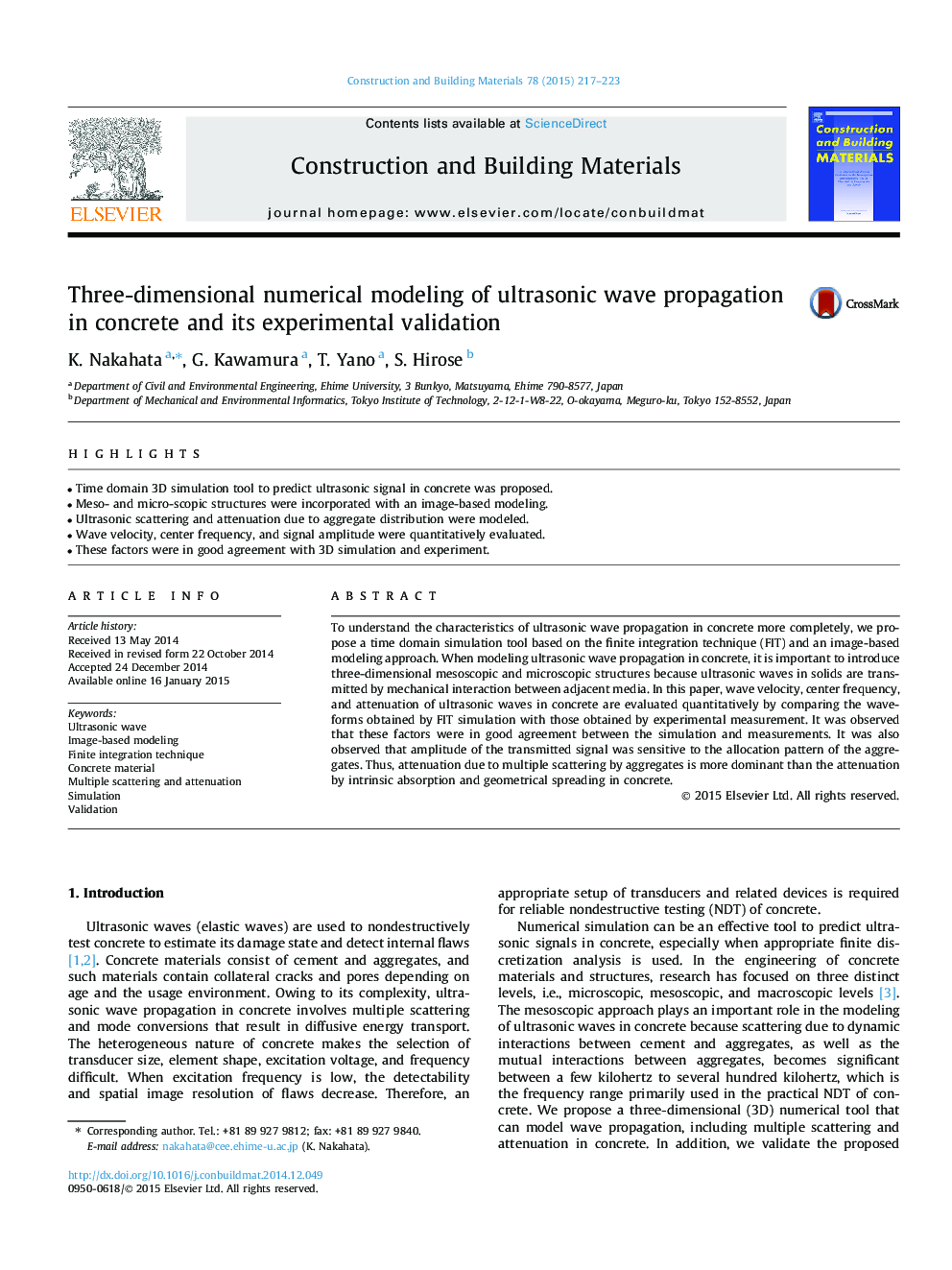| Article ID | Journal | Published Year | Pages | File Type |
|---|---|---|---|---|
| 257107 | Construction and Building Materials | 2015 | 7 Pages |
•Time domain 3D simulation tool to predict ultrasonic signal in concrete was proposed.•Meso- and micro-scopic structures were incorporated with an image-based modeling.•Ultrasonic scattering and attenuation due to aggregate distribution were modeled.•Wave velocity, center frequency, and signal amplitude were quantitatively evaluated.•These factors were in good agreement with 3D simulation and experiment.
To understand the characteristics of ultrasonic wave propagation in concrete more completely, we propose a time domain simulation tool based on the finite integration technique (FIT) and an image-based modeling approach. When modeling ultrasonic wave propagation in concrete, it is important to introduce three-dimensional mesoscopic and microscopic structures because ultrasonic waves in solids are transmitted by mechanical interaction between adjacent media. In this paper, wave velocity, center frequency, and attenuation of ultrasonic waves in concrete are evaluated quantitatively by comparing the waveforms obtained by FIT simulation with those obtained by experimental measurement. It was observed that these factors were in good agreement between the simulation and measurements. It was also observed that amplitude of the transmitted signal was sensitive to the allocation pattern of the aggregates. Thus, attenuation due to multiple scattering by aggregates is more dominant than the attenuation by intrinsic absorption and geometrical spreading in concrete.
